11.4 Building Work Log Reports
With the CouchDB database installed and the Work Log database settings established in the Admin Client, you are ready to build Work Log reports.
Work Log reports are built in the Admin Client using a pivot grid interface. There are four preset options for viewing data, along with a playground option that lets you choose the parameters and presentation of the report.
The remainder of this chapter briefly introduces you to the features and capabilities of Work Log reports through some basic procedures.
11.4.1 Loading Work Log Entries
-
In the Admin Client, click the Work Log tab.
-
Click Reports.
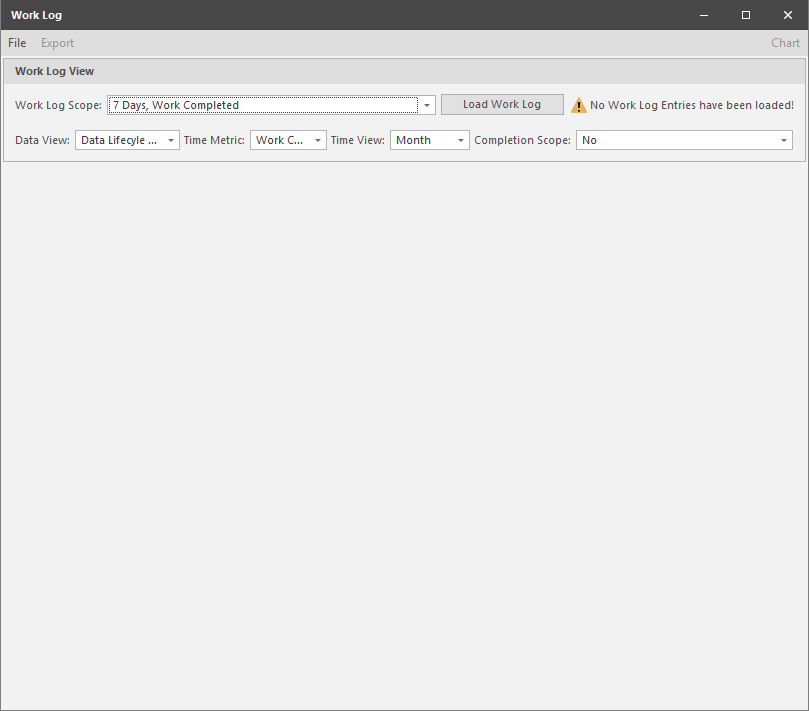
-
Click Load Work Log Entries.
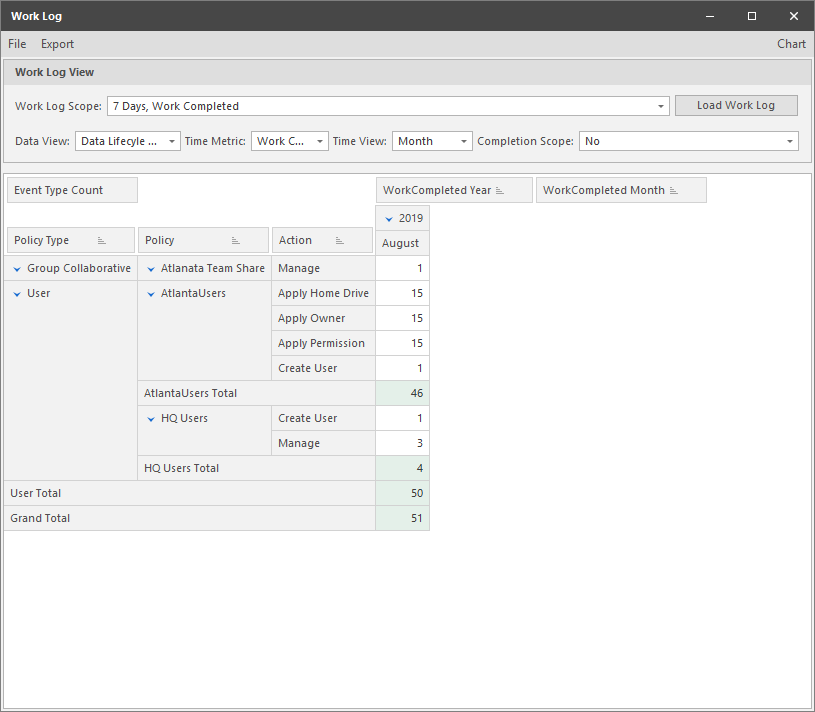
All Work Log entries in the CouchDB database are loaded and displayed with default parameters that you can modify.
11.4.2 Setting the Work Log Scope
-
Click the down arrow that pertains to the Work Log Scope field.
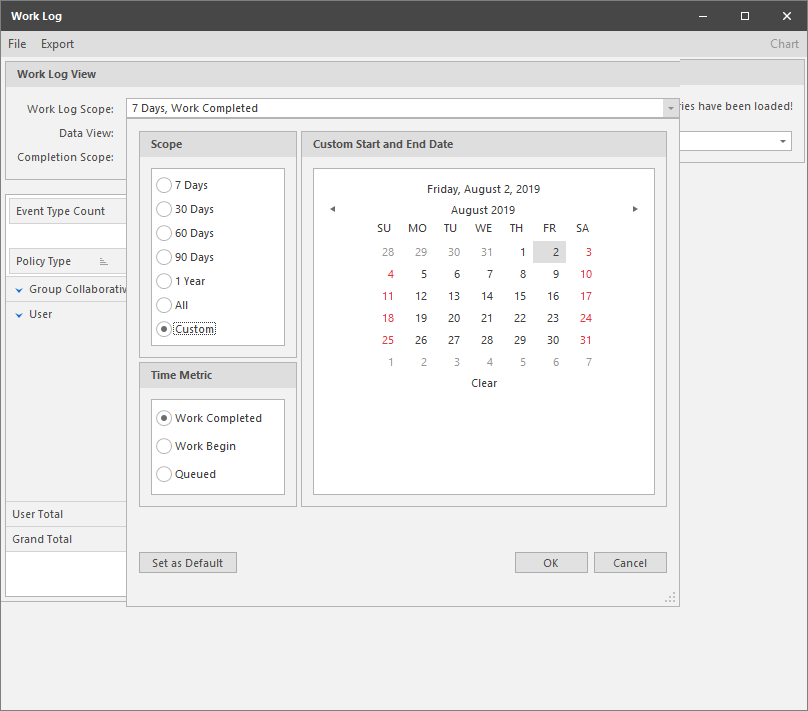
-
In the dialog box, specify the parameters you want by selecting applicable options.
Scope: Lets you specify the timespan for the report. All of the Days options will include events, according to the selected Time Metric option from today’s date. The All option will include all events, according to the selected Time Metric option. The Custom option lets you select a start and stop date from the calendar using the Shift key.
Time Metric: Lets you specify what types of events to include in the Work Log report.
Custom Start and End Date: This calendar is activated when you select the Custom option from the Scope region. Select a start and end date using the Shift key.
Set as Default: Lets you establish your selected options and specifications as the default setting for all Work Log reports.
-
Click OK.
The new parameters are specified in the Work Log Scope field.
11.4.3 Data View Options
The Data View drop-down menu has five options:
-
Playground: This Work Log report option enables you to specify what fields to include in the report. All of the reporting parameters are available for selection in the top portion of the pivot grid. You build the Work Log report by dragging the desired fields where you want them placed in the report. These fields can be displayed as either rows or columns.
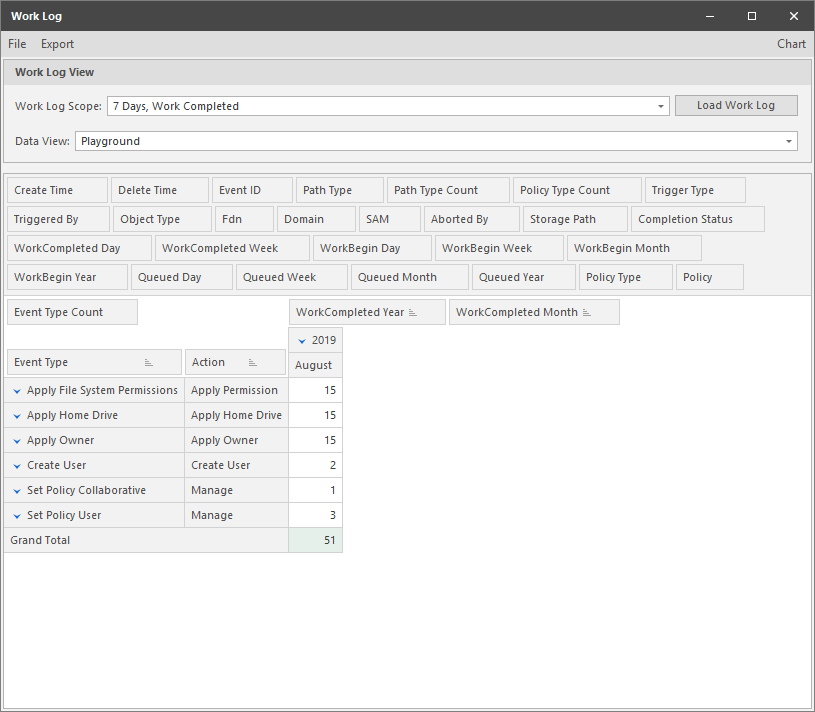
In any cell with a numeral, you can double-click to access an expanded, detailed report of events.
You can also click Chart to view the data in a graphical format of your choosing.
-
Policy Activity: This Work Log report option specifies events for all policies regardless of how they were triggered. according to the selected Time Metric, Time View, and Completion Scope options.
In the example below, the Work Log report lists completed File Dynamics events for the Month of May 2018.
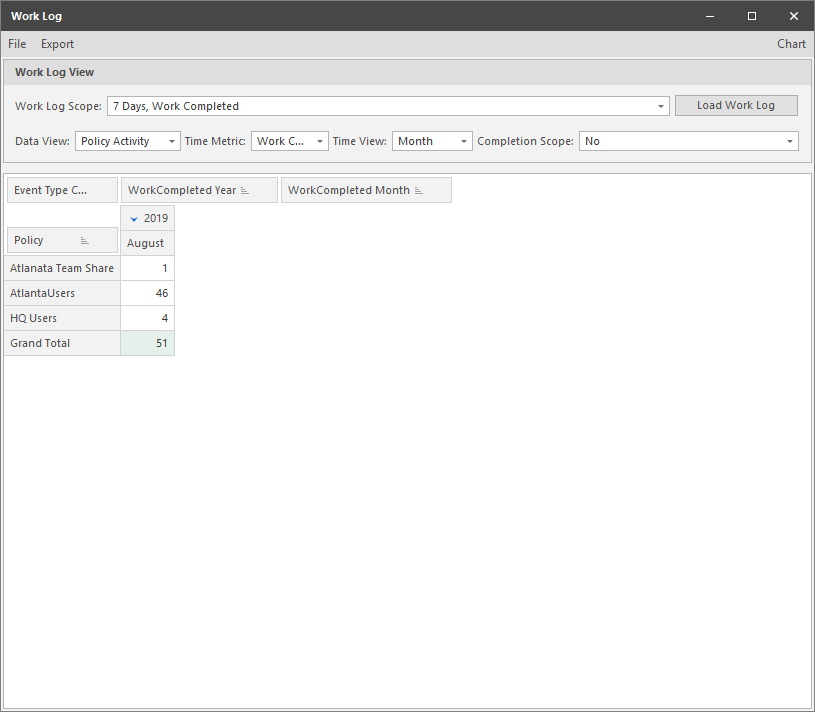
In any cell with a numeral, you can double-click to access an expanded, detailed report of events.
You can also click Chart to view the data in a graphical format of your choosing.
-
Event Trigger: This Work Log report option specifies events generated by an Event Monitor or a File Dynamics administrator performing Management Actions, according to the selected Time Metric, Time View, and Completion Scope options.
In the example below, the Work Log report lists completed Active Directory enacted events for the Month of May 2018.
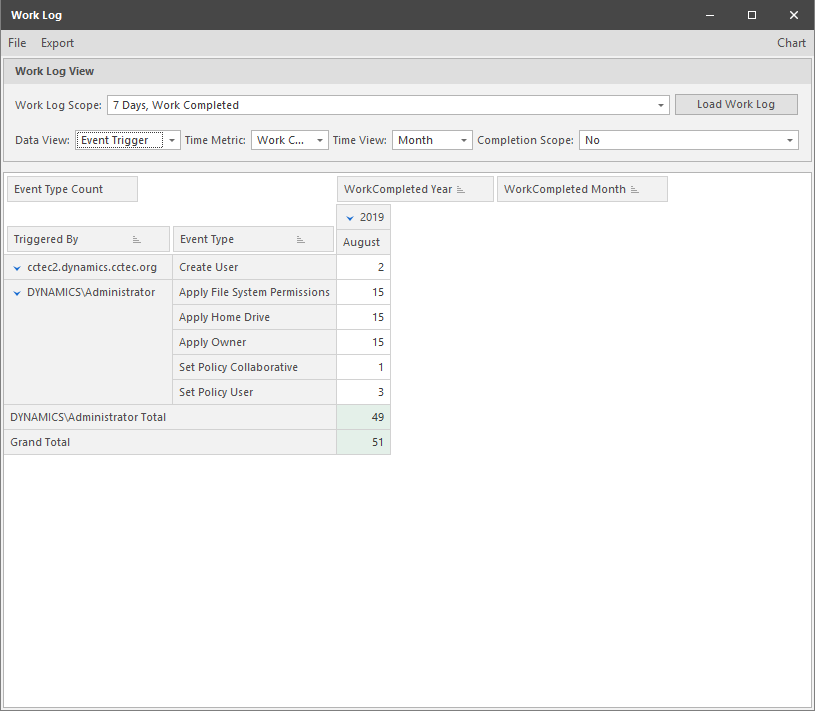
In any cell with a numeral, you can double-click to access an expanded, detailed report of events.
You can also click Chart to view the data in a graphical format of your choosing.
-
Policy Type Event Distribution: This Work Log report option distinguishes events by File Dynamics policy types according to the selected Time Metric, Time View, and Completion Scope options.
In the example below, the Work Log report lists completed events for the Month of May 2018.
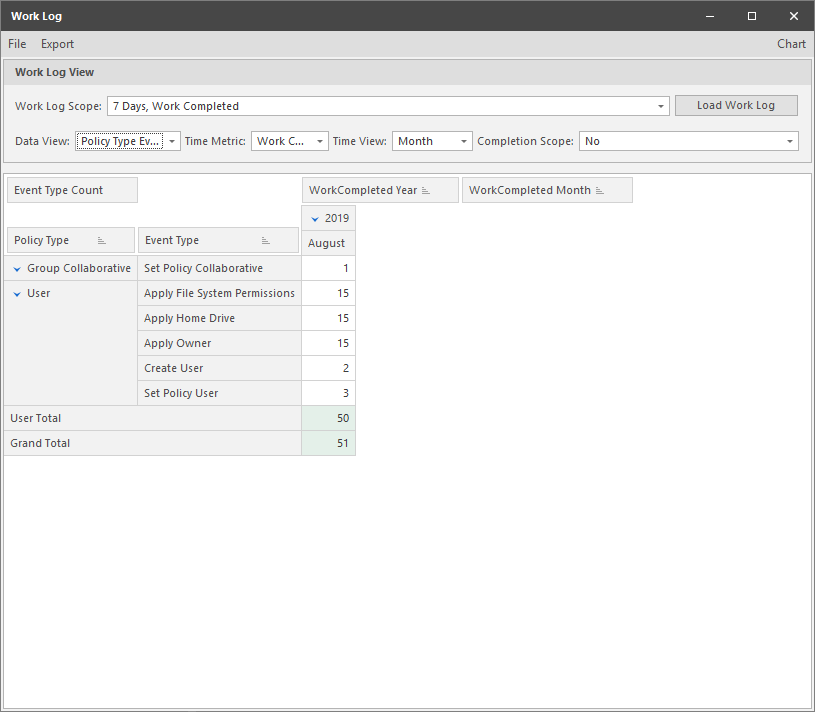
In any cell with a numeral, you can double-click to access an expanded, detailed report of events.
You can also click Chart to view the data in a graphical format of your choosing.
-
Data Lifecycle Monthly: This Work Log report option specifies events by policy type, policy name, action, and month according to the selected Time Metric, Time View, and Completion Scope options.
In the example below, the Work Log report lists completed events for the Month of May 2018.
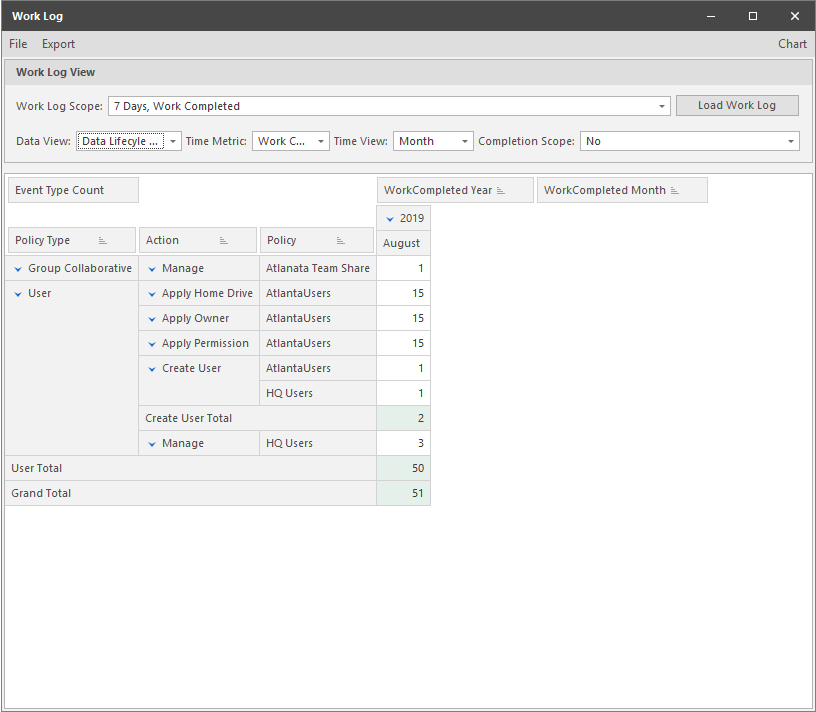
In any cell with a numeral, you can double-click to access an expanded, detailed report of events.
You can also click Chart to view the data in a graphical format of your choosing.
11.4.4 Build a Work Log Report
-
In the Admin Client, click the Work Log tab.
-
Click Reports.
-
Click Load Work Log Entries.
-
From the Data View drop-down menu, select the data view option you want.
-
(Conditional) If you select Playground, select and position the fields you want in the report.
-
Select your Time Metric, Time View, and Completion Scope options.
11.4.5 Saving a View
After you have designed a Work Log report using the Playground data view option, you can save it and then use it to again to report on updated event data.
-
In the Admin Client, click the Work Log tab.
-
Click Reports.
-
Click Load Work Log Entries.
-
From the Data View drop-down menu, select Playground.
-
Select your Time Metric, Time View, and Completion Scope options.
-
Select and position the fields you want in the report.
-
From the File menu, select Save View.
-
Name and save the view.
With the view saved, you can retrieve through the Load View or Views menu options of the File menu.
11.4.6 Exporting a Work Log Report
File Dynamics enables you to export Work Log reports to the following formats:
-
CSV
-
HTML
-
MHT
-
PDF
-
RTF
-
TXT
-
XLS
-
XLSX
-
In the Admin Client, click the Work Log tab.
-
Click Reports.
-
Click Load Work Log Entries.
-
From the Data View drop-down menu, select the data view option you want.
-
(Conditional) If you select Playground, select and position the fields you want in the report.
-
Select your Time Metric, Time View, and Completion Scope options.
-
From the Export menu, select the format you want.
-
Name and save the exported Work Log report.